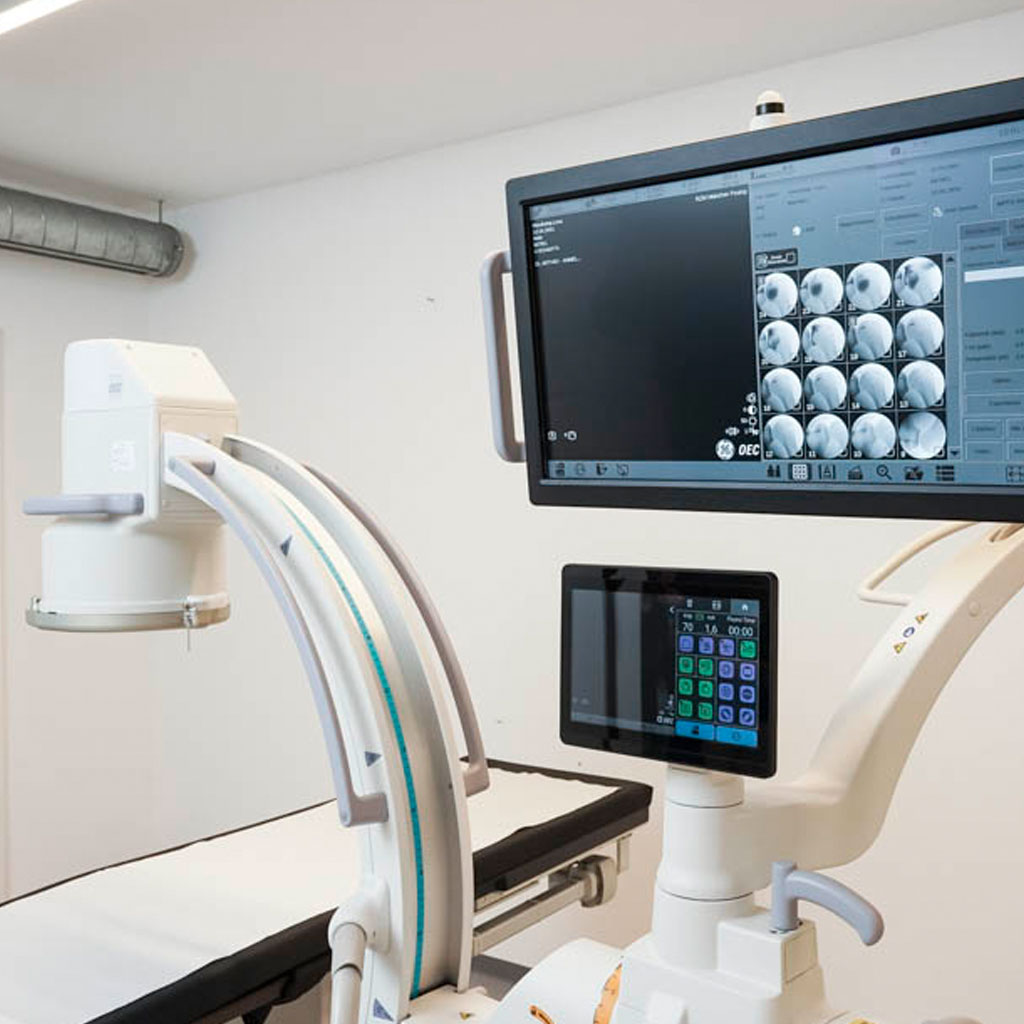We offer this service at the following locations:
Digital X-rays are an essential and important part of diagnostic radiology. X-rays are still indispensable as a basic examination, especially for visualising the lungs and bones. In conventional X-rays, light-sensitive films were exposed to X-rays and then developed. At our Munich Radiology Centre, we offer you the modern form of X-ray: Digital X-rays are a further development of this earlier procedure. Instead of exposing film, a digital detector system is used. The great advantage of this procedure for you is that the radiation exposure during the examination is significantly lower compared to the previous technique.

Digital X-ray in Munich: What you need to know
At our centre, we always carry out all X-ray examinations using innovative digital technology. This means that there are no more images that are too light or too dark – as could be the case with conventional X-rays. We can post-process the images digitally and thus create the best possible basis for the examination.
All examinations are stored in an electronic archive and are therefore always available for comparison with later images. In order to fulfil the high requirements of radiation protection, we work with a modern, digital full-field system.
Findings are usually finalised on the same day and passed on to your doctor.
No appointment necessary
No prior appointment is necessary for general X-ray diagnostics.
The opening hours of the X-ray department are:
| Mon, Tue, Thu | 8am-12pm and 1pm-5pm |
| Wed, Fri | 8am-12pm |
X-rays of the entire leg and spine as well as arthrographies can only be carried out by prior appointment.
Preparation for the examination:
In general, no special preparation is necessary. Our registration desk will inform you about the preparation for arthrography.
Basic information on digital X-rays at the Radiological Centre Munich
X-rays are electromagnetic waves generated by an X-ray tube. They are directed to the area of the body to be examined via a so-called tube. The rays are able to penetrate the body. With conventional X-rays, the radiation hits a film behind the body region being x-rayed, whereas with digital X-rays it hits an imaging plate/sensor.
The different tissue parts in the body (bones, organs and cavities) change the incoming X-rays in different ways. Bones appear light-coloured on an X-ray image – as their density means they only allow a small amount of radiation to pass through. Organs such as the lungs and the heart, which are less dense, appear dark on the X-ray image.
With digital X-rays, the X-ray image is not exposed on an X-ray film as in the past. Instead, it is recorded on a special imaging plate or sensor. The film is very sensitive, which is why up to 90 % less radiation is required for an image. The resulting digital X-ray image does not need to be developed. We can view it directly on the computer as a data set.
Our attending physician will refer you to us at the Radiological Centre Munich to visualise any changes inside your body using digital X-ray technology. We can make a diagnosis based on the assessment of the images. The therapy or further treatment is then again carried out by your doctor.
Digital X-rays allow us to visualise bone diseases such as fractures. We can also use it to assess the position of prostheses, plates and screws after an operation. Soft tissue and histological changes are often not sufficiently visualised. If questions arise here, we offer other procedures such as sonography, computer tomography (CT) or magnetic resonance imaging (MRI) for further clarification.
Compared to conventional analogue X-ray examinations, digital X-rays in Munich offer many advantages:
- High-resolution images with less radiation exposure
- Less environmental pollution from harmful chemicals, as the digital images do not have to be developed in the darkroom
- A light box is no longer required to assess the images; they can be viewed on a PC
- In order to increase contrast or improve the visualisation of certain areas, we can post-process digital X-ray images (so there is no need to repeat unsuccessful images)
- Uncomplicated transfer of the images (e.g. via CD or electronic data transfer)